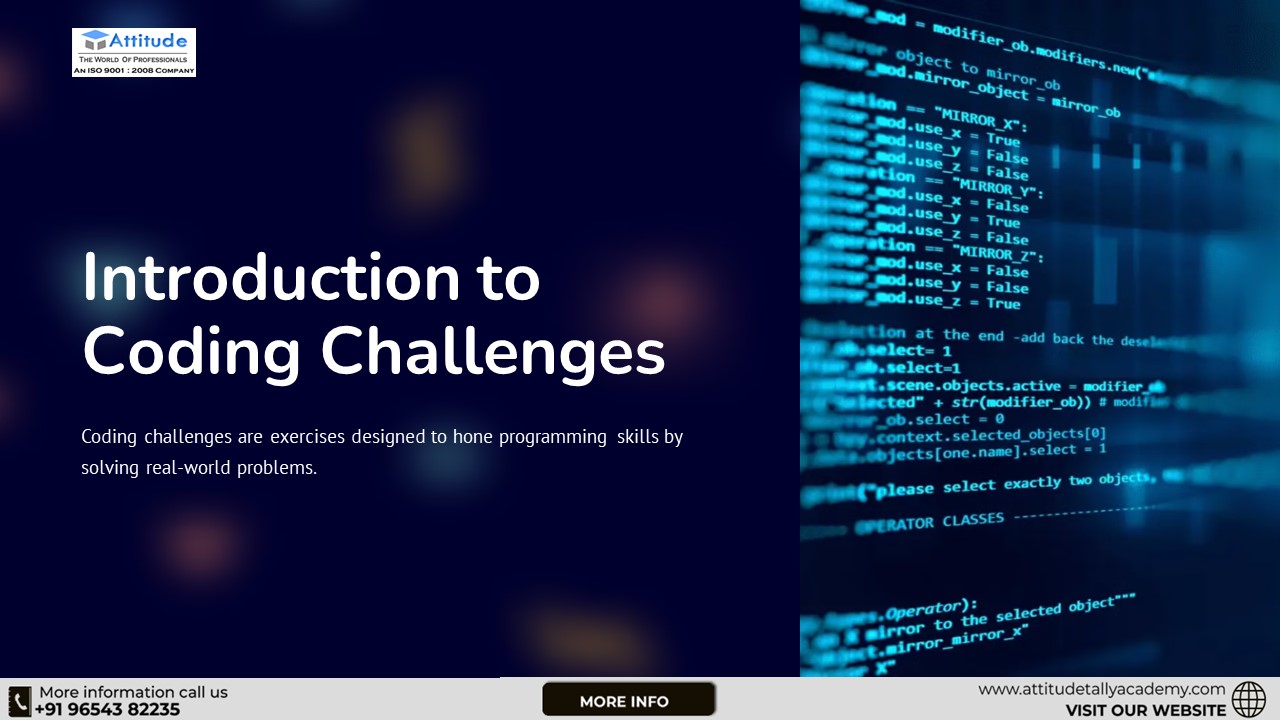How to Solve Coding Challenges Using Data Structures - PowerPoint PPT Presentation
Title:
How to Solve Coding Challenges Using Data Structures
Description:
Are you a computer science student eager to excel in coding challenges? Understanding data structures can be your secret weapon! In this presentation, we'll explore how you can leverage data structures to conquer coding challenges and excel in your programming journey. Useful Link: – PowerPoint PPT presentation
Number of Views:1
Title: How to Solve Coding Challenges Using Data Structures
1
Introduction to Coding Challenges
Coding challenges are exercises designed to hone
programming skills by solving real-world problems.
2
Index
Introduction to Coding Challenges
Importance of Data Structures
Understanding data structures and their role in
solving coding challenges effectively.
An overview of the purpose and significance of
coding challenges in the tech industry.
Algorithms and Problem Solving
Exploring the connection between data structures
and algorithmic problem-solving techniques.
3
Overview of Data Structures
- Array A data structure that stores a collection
of elements, each identified by at least one
array index or key.
- Linked List A linear collection of data elements
whose order is not given by their physical
placement in memory.
- Stack A collection of elements with two main
operations, namely pushing an item into the
collection and popping an item from the
collection.
4
Array and its applications in coding challenges
Data Storage
Applications
Arrays store elements of the same data type
together in contiguous memory locations.
- Array-based sorting algorithms such as QuickSort
and MergeSort.
- Dynamic programming problems like finding the
longest increasing subsequence.
They are efficient for random access and element
retrieval using indexes.
5
Linked list and its applications in coding
challenges
1
Traversal
Iterating through each element to access, modify,
or display data.
2
Insertion and Deletion
Adding or removing elements while maintaining the
logical sequence.
3
Reversal
Reversing the order of elements within the linked
list for specific operations.
6
Stack and its applications in coding challenges
Stack is a fundamental data structure used in
coding challenges to manage function calls,
undo/redo functionality, and parentheses
balancing.
It follows the Last In First Out (LIFO) principle
and offers efficient solutions for problems like
reversing a string or evaluating postfix
expressions.
Stacks are vital for backtracking algorithms such
as depth-first search and can also be implemented
using arrays or linked lists.
7
Queue and its applications in coding challenges
First-in, First-out (FIFO)
Buffering
Resource Sharing
Queues follow FIFO, making them useful for tasks
like job scheduling and printer spooling.
Used to manage data flow, preventing overflow in
scenarios like network data transfer.
Queues facilitate fair resource allocation, such
as CPU time in multitasking systems.
8
Tree and its applications in coding challenges
Tree Data Structure
The tree data structure is hierarchical and is
commonly used to represent hierarchical
relationships such as organization structures or
family trees. It consists of nodes connected by
edges, with a single node at the top called the
root.
In coding challenges, trees are utilized to solve
problems involving hierarchical data, such as
representing file systems, hierarchical
clustering, and expression evaluation in
compilers.
9
Conclusion and key takeaways
Problem-solving approach
Importance of practice
Use data structures to break down coding
challenges effectively and strategize solutions.
Consistent practice on coding challenges improves
understanding of data structures and algorithms.
Resource utilization
Growth mindset
Maximize the use of available resources such as
online platforms, forums, and coding communities
to enhance learning.
Embrace challenges, learn from failures, and
persist in refining coding skills with a
growth-oriented mindset.
10
FAQ's
Answers to common questions about coding
challenges and data structures.
Thank You!
Thanks for viewing our presentation. If you have
any more questions, please don't hesitate to ask!































